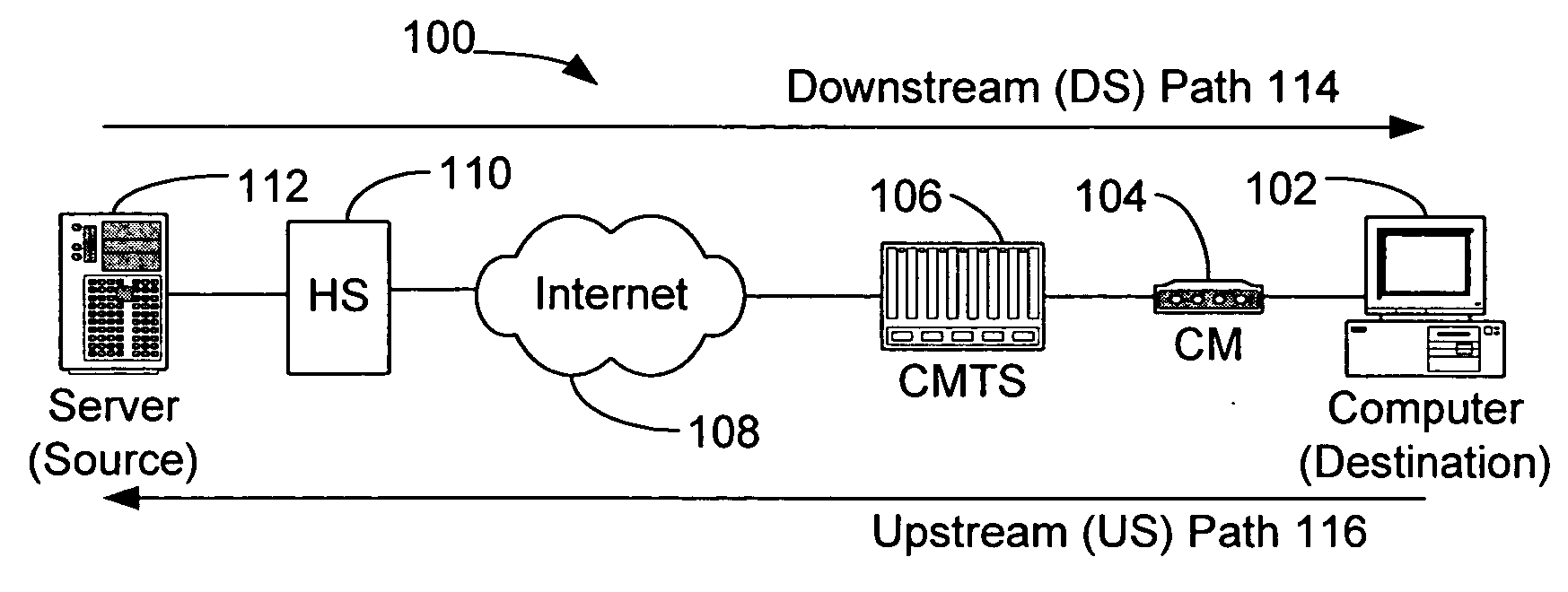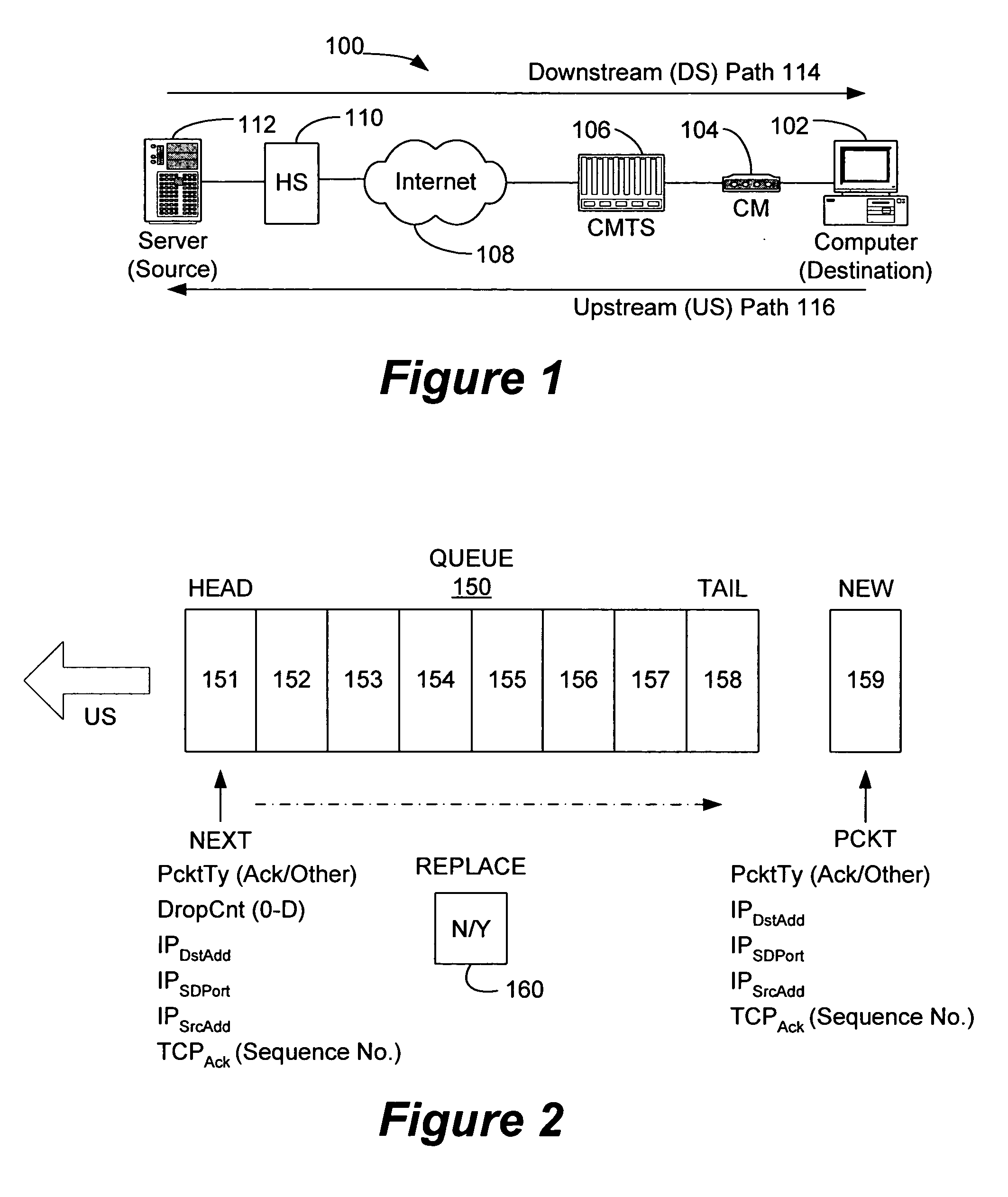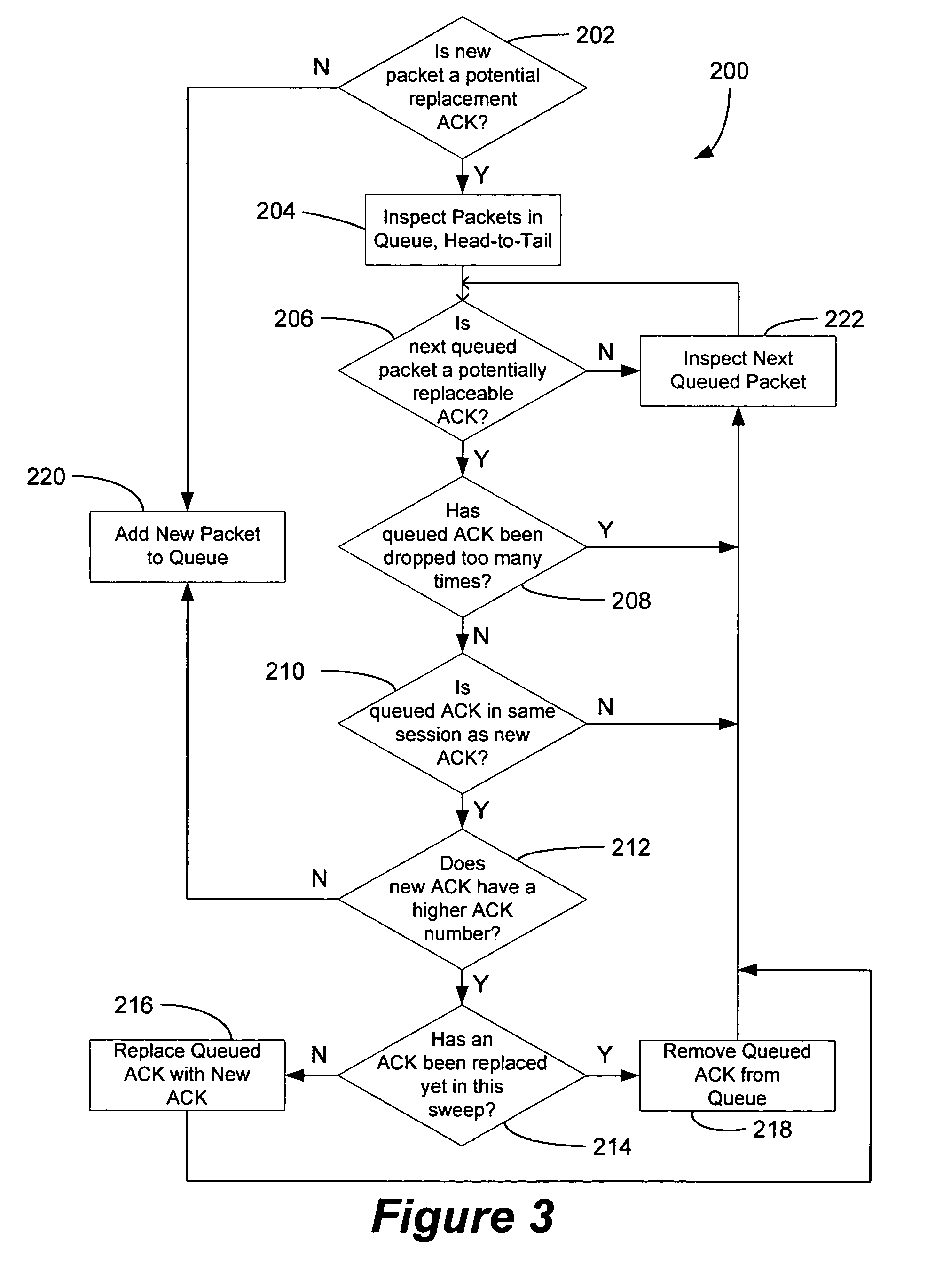TCP acceleration system
a technology of acceleration system and transmission control protocol, applied in data switching networks, frequency-division multiplexes, instruments, etc., can solve problems such as duplicate acks, packet loss, and significant complexity of actual implementation
- Summary
- Abstract
- Description
- Claims
- Application Information
AI Technical Summary
Benefits of technology
Problems solved by technology
Method used
Image
Examples
Embodiment Construction
[0021]FIG. 1 depicts an example network system 100 in which the present invention may be implemented as part of the cable modem (CM) device. System 100 includes, on the client side, a computer (the client) 102 attached to a cable modem device 104 coupled to the Internet 108 via a Cable Modem Termination System (CMTS) device using the DOCSIS interface 106. On the source or server side, the server 112 is coupled to the Internet 108 via any of a number of possible high-speed (HS) interfaces 110 (e.g., 100 MB Ethernet, T3 or OC-3 leased lines, etc.) immaterial to the invention. The communications path from source-to-destination is referred to as the downstream (DS) path 114, and the reverse communications path from destination-to-source is referred to as the upstream (US) path 116. It should be understood that the scenario presented in FIG. 1 is just one example of a system in which the present invention may be implemented, and that the present invention has utility in any TCP communica...
PUM
 Login to View More
Login to View More Abstract
Description
Claims
Application Information
 Login to View More
Login to View More - R&D
- Intellectual Property
- Life Sciences
- Materials
- Tech Scout
- Unparalleled Data Quality
- Higher Quality Content
- 60% Fewer Hallucinations
Browse by: Latest US Patents, China's latest patents, Technical Efficacy Thesaurus, Application Domain, Technology Topic, Popular Technical Reports.
© 2025 PatSnap. All rights reserved.Legal|Privacy policy|Modern Slavery Act Transparency Statement|Sitemap|About US| Contact US: help@patsnap.com



